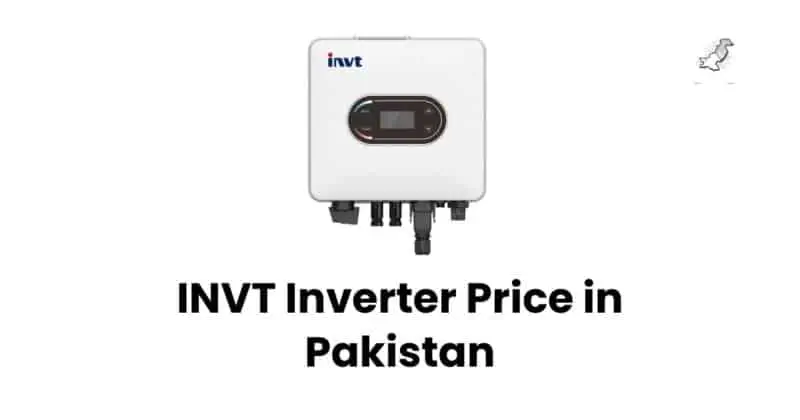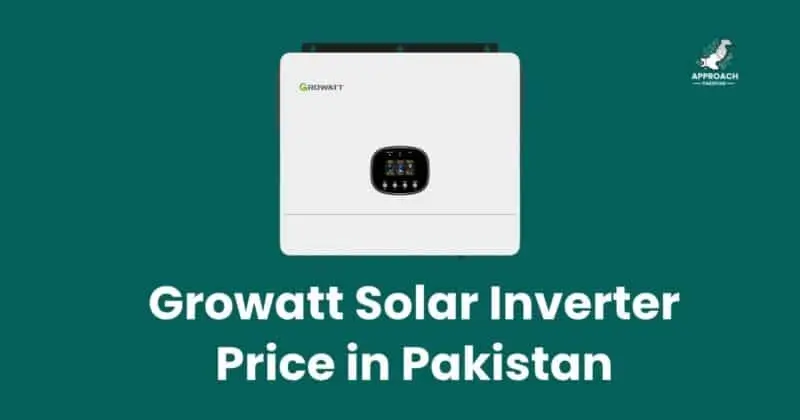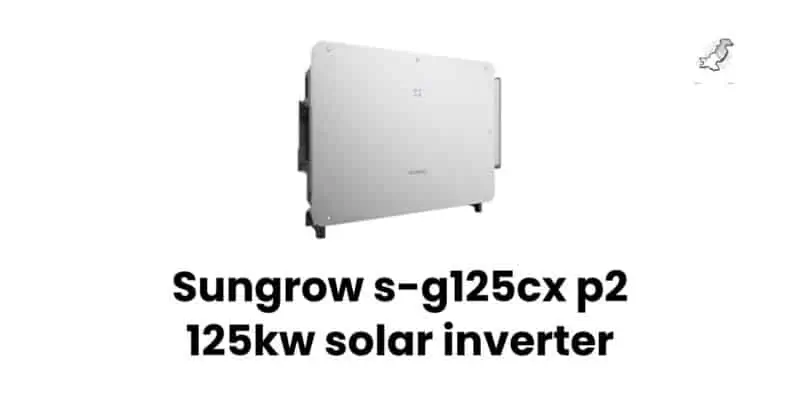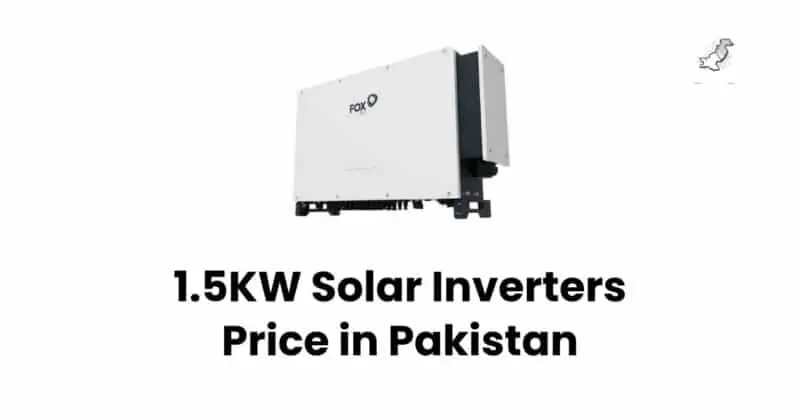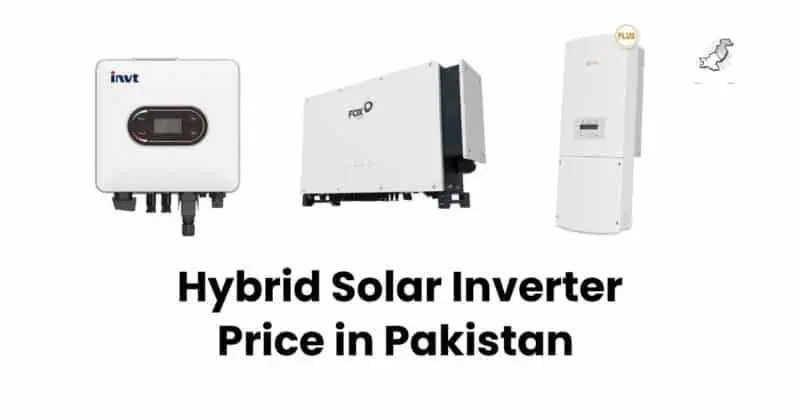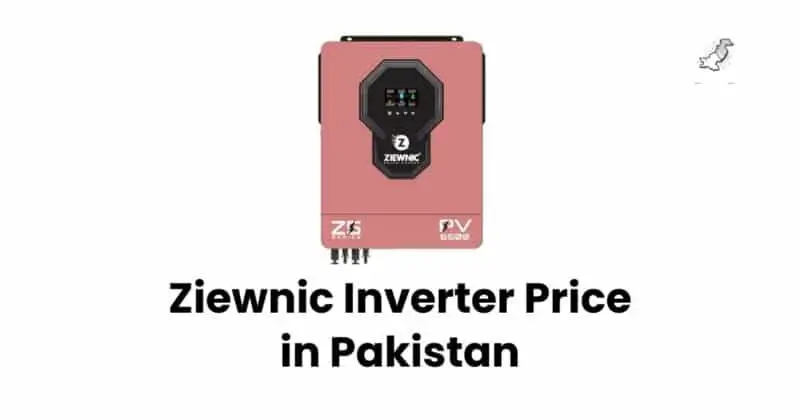5kW Solar Inverter Price Pakistan 2025 | Complete Guide
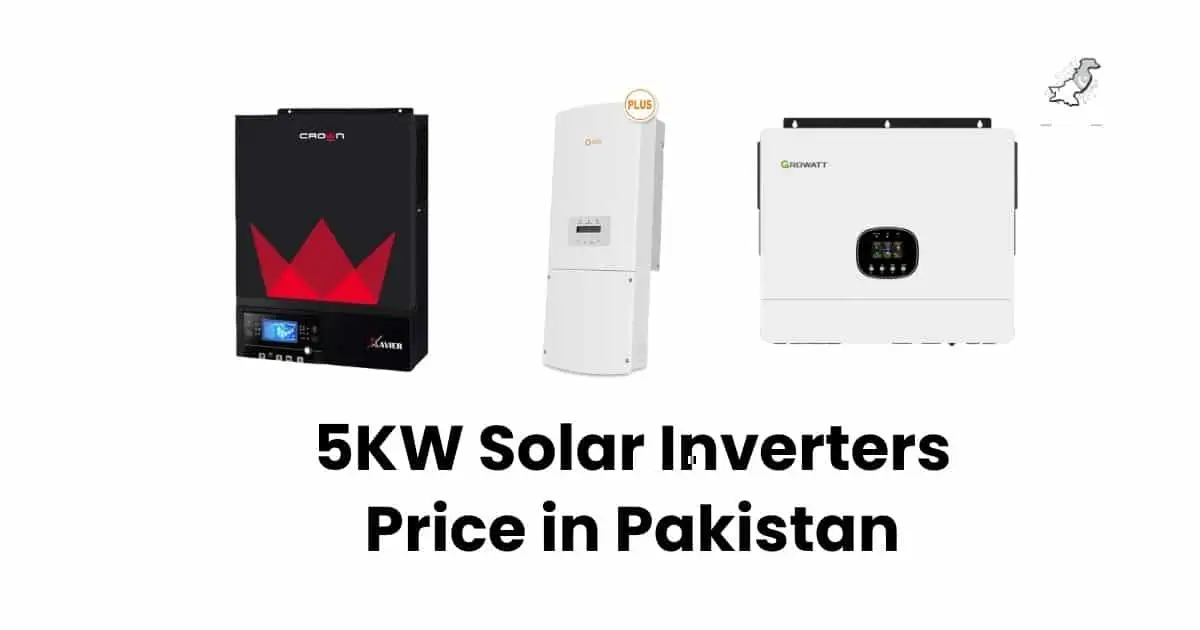
A 5kW solar inverter in Pakistan costs between PKR 185,000 to PKR 450,000 depending on the type. Hybrid inverters range from PKR 280,000-450,000, on-grid models cost PKR 185,000-250,000, and off-grid systems are priced at PKR 220,000-350,000.
Introduction: 5kW Solar Inverter Market in Pakistan
Your electricity bill just jumped 30% again. The power cuts during peak summer left your family sweating through another sleepless night. Sound familiar?
I get it. With load shedding hitting 8-10 hours daily in major cities, Pakistani households need reliable backup power. A 5kW solar inverter system can slash your electricity bills by 70-80% while keeping the lights on during outages.
1.1 Current Market Overview
Pakistan’s solar inverter market has exploded. Sales jumped 45% in 2024 alone. The 5kW segment dominates residential installations, accounting for 38% of all home solar systems.
Why? It’s the sweet spot for average Pakistani homes consuming 400-600 units monthly. Chinese brands control 65% market share, followed by European manufacturers at 20% and local assemblers at 15%.
1.2 Why 5kW Inverters Are Ideal for Pakistani Homes
A 5kW system powers everything you need. It runs 2-3 air conditioners, all lights, fans, refrigerator, washing machine, and still leaves headroom. Most 10-marla to 1-kanal homes find it perfect.
The math is simple. Average Pakistani homes use 15-20 units daily. A 5kW system generates 20-25 units on sunny days, covering your entire consumption with surplus for net metering credits.
1.3 Price Range Expectations
Let’s cut through the confusion. Basic 5kW on-grid inverters start at PKR 185,000. Mid-range hybrid models cost PKR 280,000-350,000. Premium European brands with advanced features reach PKR 450,000.
Hidden costs? Add PKR 50,000-80,000 for installation, wiring, and structure. Don’t forget PKR 15,000-25,000 for net metering application and inspection fees.
Complete 5kW Solar Inverter Price Guide Pakistan
2.1 Current Price Ranges by Type
| Inverter Type | Price Range (PKR) | Popular Brands | Best For |
| On-Grid | 185,000 – 250,000 | Huawei, Solis, Growatt | Areas with stable grid |
| Off-Grid | 220,000 – 350,000 | MaxPower, Homage | Remote areas |
| Hybrid | 280,000 – 450,000 | Inverex, SolarMax, Knox | Load shedding areas |
2.2 Price Comparison: Hybrid vs On-Grid vs Off-Grid
What’s the difference between hybrid and on-grid inverters? Hybrid inverters work with both grid power and batteries, automatically switching during outages. On-grid models only function when the main grid is active, while off-grid systems operate independently with battery storage only.
Hybrid models cost 40-50% more than on-grid variants. Why pay extra? You get uninterrupted power during load shedding. On-grid systems shut down during outages for safety reasons.
Off-grid pricing sits between the two. These systems need larger battery banks since there’s no grid backup, pushing costs higher than on-grid but usually below hybrid options.
2.3 City-wise Pricing Variations
Karachi dealers charge 5-8% less than other cities. Why? Direct port access reduces transportation costs. Lahore and Islamabad prices run similar, while Peshawar and Quetta add 10-15% for logistics.
| City | Average Price (PKR) | Installation Cost | Total Investment |
| Karachi | 315,000 | 55,000 | 370,000 |
| Lahore | 330,000 | 60,000 | 390,000 |
| Islamabad | 335,000 | 65,000 | 400,000 |
| Peshawar | 360,000 | 70,000 | 430,000 |
| Multan | 340,000 | 60,000 | 400,000 |
2.4 Factors Affecting Pricing
Dollar rate fluctuations hit hard. A 10-rupee increase adds PKR 15,000-20,000 to inverter costs overnight. Most dealers quote prices valid for 3-7 days only.
Import duties and taxes comprise 35-40% of final price. Government solar promotion schemes occasionally reduce duties, creating buying opportunities. Smart buyers track policy announcements.
Brand reputation commands premiums. Tier-1 manufacturers like Huawei and Fronius cost 30-40% more than Chinese alternatives. You’re paying for reliability, efficiency, and 10-year warranties versus 2-year coverage.
Top 10 Best 5kW Solar Inverters in Pakistan 2025
3.1 Inverex Veyron II 5kW Hybrid Review
Pakistan’s bestseller for good reason. The Veyron II delivers 97.5% efficiency with dual MPPT tracking. Price: PKR 385,000.
Built-in WiFi monitoring lets you track production from your phone. The system handles 450V DC input, perfect for rooftop installations. Battery charging reaches 100A, filling a 200Ah bank in 2 hours.
Customer feedback? 4.5/5 stars across 2,000+ installations. Main complaint: app interface needs improvement.
3.2 Huawei SUN2000-5KTL-M1 Analysis
Why choose Huawei’s 5kW inverter? It’s the efficiency king at 98.4%, meaning more power from the same panels. The AI-powered arc detection prevents fire hazards, while the optimizer-ready design boosts shaded panel performance by 30%.
Priced at PKR 265,000 (on-grid only), it’s premium but worth it. The 10-year warranty beats everyone else’s 5-year standard. FusionSolar app provides professional-grade monitoring free.
Downside? No battery support means zero backup during outages.
3.3 Growatt 5kW Hybrid Features
Growatt MIN 5000TL-XH balances price and performance beautifully. At PKR 295,000, you get dual MPPT, battery compatibility, and decent 97.2% efficiency.
The touch screen LCD makes setup foolproof. Even electricians with basic solar knowledge can configure it properly. Remote firmware updates keep features current.
Battery options include lithium and lead-acid support. The 100A charging current rivals inverters costing 30% more.
3.4 SolarMax Falcon 5kW Performance
Local assembly keeps SolarMax prices competitive. The Falcon 5kW hybrid costs PKR 275,000 with 2-year warranty. Efficiency hits 96.8% – not stellar but acceptable.
What sets it apart? Exceptional after-sales service with 15 service centers nationwide. Spare parts stay available for 10 years, unlike fly-by-night brands.
The rugged design handles Pakistani summer heat better than most. Operating temperature reaches 60°C without derating.
3.5 Fronius Primo 5.0kW Specifications
Austrian engineering at its finest. The Primo 5.0 achieves 98.1% efficiency with active cooling keeping noise under 40dB. Price: PKR 425,000 (on-grid).
SuperFlex Design means no external DC disconnect needed. The SnapINverter mounting system cuts installation time by 50%. Integrated data logging stores 3 years of production history.
Worth the premium? If you want set-and-forget reliability for 20+ years, absolutely.
3.6 Knox Krypton 5kW Value Analysis
Knox brings aggressive pricing without compromising quality. The Krypton 5kW hybrid sells for PKR 265,000, undercutting competition by 15-20%.
Chinese components keep costs down while maintaining 96.5% efficiency. The color LCD display and mobile app match premium brands’ interfaces. Battery compatibility includes most Pakistani brands.
Service network? Growing but limited to major cities currently.
3.7 Homage HSI-5K Budget Option
Budget buyers’ favorite at PKR 195,000 (off-grid configuration). Homage leverages its UPS manufacturing experience for reliable basics.
Don’t expect bells and whistles. No WiFi monitoring or fancy displays here. But it works reliably in rural areas where simplicity matters more than features.
Local manufacturing means readily available spare parts. Any electrician can service it using standard components.
3.8 MaxPower Sunglow 5kW Off-Grid
Purpose-built for areas without grid access. The Sunglow 5kW costs PKR 310,000 with integrated 80A MPPT charger. Pure sine wave output keeps sensitive electronics happy.
The robust design handles dusty environments common in rural Pakistan. Conformal coating protects circuits from moisture during monsoon season.
Battery management includes temperature compensation and equalization charging. Your batteries last 30% longer compared to basic chargers.
3.9 Primax Venus 5kW Features
Dark horse candidate gaining market share rapidly. Venus 5kW hybrid priced at PKR 285,000 offers German MPPT controllers with Chinese assembly.
Standout feature? Parallel operation capability. Connect up to 6 units for 30kW systems, perfect for growing power needs. Most competitors limit parallel operation to 3 units.
The 5-year warranty beats Chinese competitors’ typical 2-3 year coverage.
3.10 Solax 5kW IP65 Hybrid
Which 5kW inverter handles extreme weather best? Solax’s IP65-rated hybrid laughs at monsoon rains and dust storms. The sealed enclosure costs PKR 340,000 but eliminates weather-related failures.
EPS switching time under 10ms keeps computers running during grid failures. The oversized heat sink maintains full output even at 50°C ambient temperature.
Compatible with Solax’s own lithium batteries for optimal performance. Third-party battery support exists but sacrifices some features.
5kW Solar Inverter Technical Specifications Guide
4.1 Power Output and Efficiency Ratings
Real-world output differs from nameplate ratings. A “5kW” inverter typically delivers 4.5-4.8kW continuously. Peak output might hit 5.5kW briefly for motor starting surges.
Efficiency percentages seem similar, but small differences matter. A 97% efficient inverter wastes PKR 12,000 worth of power annually versus a 98% model. Over 10 years, that’s significant money.
4.2 MPPT Technology Explanation
Maximum Power Point Tracking squeezes every watt from your panels. Dual MPPT means two independent trackers, crucial when panels face different directions or experience partial shading.
Single MPPT inverters lose 20-30% production with shading. Dual MPPT limits losses to affected strings only. For Pakistani rooftops with water tanks and shade issues, dual MPPT is essential.
4.3 Battery Compatibility and Charging
Not all batteries work with every inverter. Lithium batteries need specific charging profiles that older inverters can’t provide. Lead-acid types (tubular, AGM, gel) have different voltage requirements.
Charging current matters for backup duration. A 100A charger refills batteries twice as fast as 50A models. During short winter days, faster charging ensures full batteries before sunset.
4.4 Grid-tie Capabilities
Net metering compatibility isn’t automatic. Your inverter needs anti-islanding protection and grid synchronization meeting NEPRA standards. Some cheaper models lack proper certifications.
Power factor requirements changed in 2024. New installations must maintain 0.9 lagging to 0.9 leading. Older inverters may need replacement to comply.
4.5 Protection Features and Safety
Look beyond basic protections. Quality inverters include arc-fault detection, ground-fault protection, and rapid shutdown capabilities. These features prevent fires and electrocution risks.
Surge protection ratings indicate lightning resistance. Pakistan’s monsoon season demands minimum 4kV surge protection. Premium models offer 6kV or higher.
Installation and Setup Guide for 5kW Solar Inverters
5.1 Professional Installation Requirements
AEDB-certified installers charge PKR 50,000-80,000 for complete 5kW system installation. This covers mounting structures, DC/AC wiring, earthing, and commissioning.
Why pay professionals? Incorrect installation voids warranties and creates fire hazards. One loose connection can destroy your entire system. Insurance companies reject claims from DIY installations.
5.2 DIY Setup Considerations
Technically skilled homeowners save 40-50% doing self-installation. But consider hidden costs: DC/AC breakers (PKR 15,000), monitoring equipment (PKR 8,000), specialized tools (PKR 12,000).
Safety equipment is non-negotiable. Proper PPE costs PKR 5,000 minimum. One slip on a roof means hospital bills exceeding professional installation costs.
5.3 Wiring and Connection Diagrams
DC wiring requires special solar cables rated for 1000V and UV exposure. Regular wires degrade within months. Budget PKR 150-200 per meter for quality DC cables.
AC connections need proper gauge based on distance. For 30-meter runs, 10mm² copper costs PKR 500/meter. Undersized wires cause voltage drops and efficiency losses.
5.4 Safety Precautions and Regulations
NEPRA mandates specific safety devices. Surge protective devices (SPD) on both DC and AC sides cost PKR 8,000-12,000 but prevent catastrophic failures.
Earthing requirements changed in 2024. Single earth pits no longer suffice; you need separate DC and AC earthing systems. Proper earthing installation adds PKR 15,000-20,000.
5kW Solar Inverter Performance and ROI Analysis
6.1 Electricity Bill Savings Calculation
Let’s talk real numbers. Average 5kW systems generate 600-750 units monthly. At PKR 30/unit (current rates), that’s PKR 18,000-22,500 monthly savings.
Summer production peaks at 25-30 units daily. Winter drops to 15-20 units. Annual average: 7,500 units saving PKR 225,000 yearly.
| Month | Units Generated | Savings (PKR) | Cumulative Savings |
| January | 550 | 16,500 | 16,500 |
| February | 580 | 17,400 | 33,900 |
| March | 650 | 19,500 | 53,400 |
| April | 720 | 21,600 | 75,000 |
| May | 780 | 23,400 | 98,400 |
| June | 800 | 24,000 | 122,400 |
6.2 Payback Period Analysis
How long until my 5kW solar investment pays for itself? Typical payback runs 2.5-3.5 years depending on system cost and electricity rates. Net metering accelerates payback by 6-8 months through credit accumulation.
Premium systems costing PKR 450,000 take longer but last 25+ years. Budget PKR 250,000 systems payback faster but may need replacement after 10-15 years.
6.3 Net Metering Benefits with 5kW Systems
Net metering turns your excess power into credits. Summer surplus offsets winter shortfalls perfectly. Most 5kW systems accumulate 200-300 units credit during peak months.
NEPRA allows credit rollover for 12 months. Strategic consumption planning maximizes benefits – use heavy appliances during solar hours, minimize night usage.
6.4 Long-term Financial Benefits
Beyond bill savings, property values increase 4-6% with solar installations. Banks now offer better mortgage rates for solar-equipped homes.
Inflation protection? While electricity rates climb 15-20% annually, your solar production remains constant. Today’s PKR 400,000 investment saves PKR 4-5 million over 20 years.
Maintenance and Troubleshooting Guide
7.1 Regular Maintenance Schedule
Monthly tasks take 30 minutes. Check inverter display for error codes. Clean the cooling fans with compressed air. Verify all LED indicators show normal status.
Quarterly deep cleaning prevents efficiency losses. Dust accumulation drops output by 5-8%. Professional cleaning costs PKR 2,000-3,000 but DIY works fine with proper safety gear.
7.2 Common Issues and Solutions
“PV Voltage Too High” errors plague summer installations. Solution: Add panels in parallel rather than series. Rewiring costs PKR 5,000-8,000 but prevents inverter damage.
Grid frequency errors increase during load shedding transitions. Modern inverters handle 47-52 Hz, but older models trip frequently. Firmware updates sometimes expand tolerance ranges.
| Error Code | Meaning | DIY Solution | Professional Fix |
| E01 | Grid Lost | Wait for power | Check grid connection |
| E13 | PV Over-voltage | Reconfigure strings | Rewire panels |
| E23 | Overheating | Clean fans | Replace fans |
| E31 | Ground Fault | Check connections | Test insulation |
7.3 Warranty Claims and Support
Document everything from day one. Photograph serial numbers, installation dates, and initial readings. Most warranty rejections stem from poor documentation.
Authorized service saves headaches. Using third-party technicians often voids warranties. Yes, authorized service costs 30% more, but warranty coverage makes it worthwhile.
7.4 Performance Monitoring Tips
WiFi monitoring reveals problems early. Production drops of 10% indicate cleaning needs. Sudden 30%+ drops suggest panel or wiring issues requiring immediate attention.
Compare actual versus expected production monthly. Weather-adjusted expectations prevent false alarms. Free apps like PVWatts help set realistic baselines.
Buying Guide: How to Choose the Right 5kW Solar Inverter
8.1 Home Energy Assessment
How do I know if 5kW is right for my home? Check your highest summer electricity bill. Divide units consumed by 30 for daily average. If it’s 15-25 units, 5kW fits perfectly.
Load calculation mistakes cost money. List every appliance with wattage and daily usage hours. Add 20% safety margin for future needs.
8.2 Brand Reliability Comparison
Established brands cost more but deliver peace of mind. Check how long they’ve operated in Pakistan. Brands under 3 years old often disappear, leaving you without support.
Online reviews tell half the story. Visit actual installations in your area. Talk to owners about their experience after 1-2 years. Initial satisfaction often fades with time.
8.3 Warranty and After-sales Service
Read warranty fine print carefully. “10-year warranty” might mean 10 years on chassis but only 2 years on electronics. Component-level coverage matters more than headline numbers.
Service center proximity affects downtime. Brands with local service complete repairs in 2-3 days. Others ship inverters to Karachi, taking 2-3 weeks.
8.4 Budget Considerations and Financing Options
Bank solar financing starts at 12% annually. But factor in electricity savings – effective cost drops to 4-5%. Most banks finance 80% of system cost over 3-5 years.
Lease options emerged recently. You pay PKR 12,000-15,000 monthly for 5kW systems with zero upfront cost. Ownership transfers after 5-7 years.
City-Specific Information and Dealers
9.1 Authorized Dealers in Major Cities
| City | Dealer Name | Brands Carried | Contact |
| Karachi | Solar Traders | Inverex, Huawei, Knox | 021-34567890 |
| Lahore | Green Energy Pvt | Growatt, Fronius, SolarMax | 042-35678901 |
| Islamabad | Capital Solar | All major brands | 051-2345678 |
| Peshawar | Frontier Solar | Inverex, Knox, Homage | 091-5678901 |
| Multan | South Punjab Solar | Local + Chinese brands | 061-4567890 |
9.2 Installation Services Availability
Major cities offer 20+ certified installers. Smaller cities average 5-10 options. Rural areas often require installers from nearest city, adding PKR 10,000-20,000 transport costs.
Installation quality varies dramatically. Request photos of previous work. Check their testing equipment – professional installers carry megohmmeters and IV curve tracers.
9.3 Local Pricing Variations
Port cities enjoy 5-10% lower prices. Interior Sindh and Balochistan pay 15-20% premiums. KPK pricing sits midway due to Chinese border trade routes.
Seasonal variations affect availability. Pre-summer demand spikes prices 10-15%. Monsoon season offers discounts as installation work slows.
9.4 Regional Support Centers
Tier-1 brands maintain regional offices. Inverex covers all provincial capitals. Huawei focuses on major cities only. Local brands often lack proper support infrastructure.
Spare parts availability varies regionally. Common components stock locally, but specialized parts ship from Karachi or Islamabad. Factor 1-2 week delays in remote areas.son of Crown vs Inverex inverters to understand which brand provides better value for your specific requirements.

